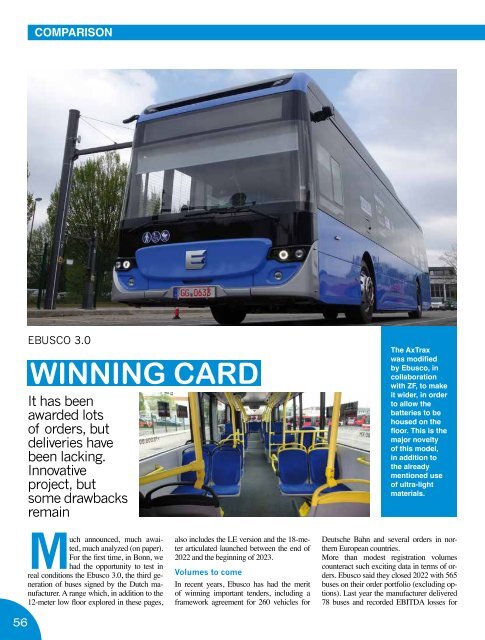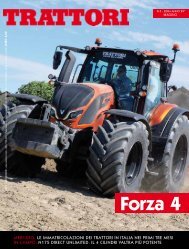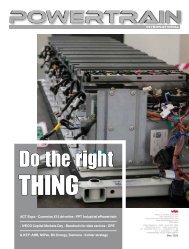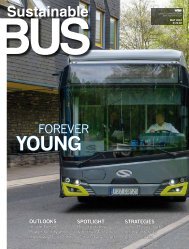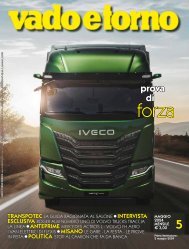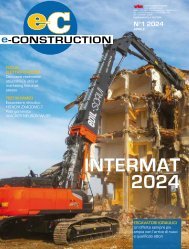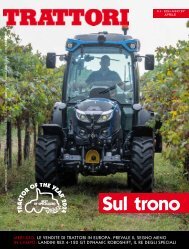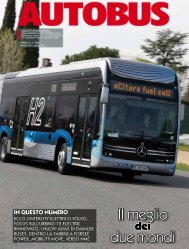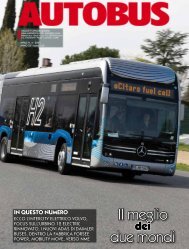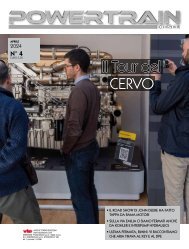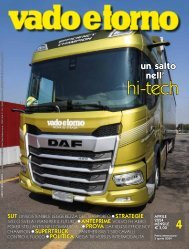2023-09 SUSTAINABLE BUS
A new issue of Sustainable Bus is out today. In this upcoming edition, we’ve curated a diverse and comprehensive range of topics that spotlight the latest developments in the world of sustainable mobility. From cutting-edge technological advancements to market insights and industry transformations, this issue promises to be a captivating exploration of the future of public transportation. What you could fine inside? Well, a market insight will offer you a detailed look at the European e-bus market, providing you with a comprehensive understanding of the mid-2023 results. The leading e-bus market in Europe is still UK: therefore, we focused our attention on that specific market with a report that sums up strategies, focus, goals of the most prominent industry players. A technology spotlight on the delicate topic of batteries, authored by Claudius Jehle, look at battery management and strategies to ensure the smooth and cost-effective operation of electric buses (with a focus on a case study from BVG). Among the pillars of our upcoming issue you’ll find a detailed journey around the European industrial bus&coach landscape. Goal? Providing our readers insights into the changing dynamics among key OEMs in the region. We’ll be then taking you behind the scenes at the Yutong factory in Zhengzhou, that we had the pleasure of visiting in June. Let’s then delve into Iveco Bus’s growing efforts in the zero-emission bus field. Finally, last but not least, a nearly-20-pages comparison between seven 12-meter battery-electric buses, gathered together in Bonn also this year by the German magazine Omnibusspiegel. You’ll find both established players and newcomers side by side: Ebusco 3.0, Hess lighTram 12m, Ikarus 120e, Iveco E-Way, Mercedes eCitaro with new batteries, Otokar e-Kent C, Quantron Cizaris 12 Ev.
A new issue of Sustainable Bus is out today. In this upcoming edition, we’ve curated a diverse and comprehensive range of topics that spotlight the latest developments in the world of sustainable mobility. From cutting-edge technological advancements to market insights and industry transformations, this issue promises to be a captivating exploration of the future of public transportation.
What you could fine inside? Well, a market insight will offer you a detailed look at the European e-bus market, providing you with a comprehensive understanding of the mid-2023 results. The leading e-bus market in Europe is still UK: therefore, we focused our attention on that specific market with a report that sums up strategies, focus, goals of the most prominent industry players.
A technology spotlight on the delicate topic of batteries, authored by Claudius Jehle, look at battery management and strategies to ensure the smooth and cost-effective operation of electric buses (with a focus on a case study from BVG).
Among the pillars of our upcoming issue you’ll find a detailed journey around the European industrial bus&coach landscape. Goal? Providing our readers insights into the changing dynamics among key OEMs in the region.
We’ll be then taking you behind the scenes at the Yutong factory in Zhengzhou, that we had the pleasure of visiting in June. Let’s then delve into Iveco Bus’s growing efforts in the zero-emission bus field.
Finally, last but not least, a nearly-20-pages comparison between seven 12-meter battery-electric buses, gathered together in Bonn also this year by the German magazine Omnibusspiegel. You’ll find both established players and newcomers side by side: Ebusco 3.0, Hess lighTram 12m, Ikarus 120e, Iveco E-Way, Mercedes eCitaro with new batteries, Otokar e-Kent C, Quantron Cizaris 12 Ev.
Create successful ePaper yourself
Turn your PDF publications into a flip-book with our unique Google optimized e-Paper software.
COMPARISON<br />
E<strong>BUS</strong>CO 3.0<br />
WINNING CARD<br />
It has been<br />
awarded lots<br />
of orders, but<br />
deliveries have<br />
been lacking.<br />
Innovative<br />
project, but<br />
some drawbacks<br />
remain<br />
Much announced, much awaited,<br />
much analyzed (on paper).<br />
For the first time, in Bonn, we<br />
had the opportunity to test in<br />
real conditions the Ebusco 3.0, the third generation<br />
of buses signed by the Dutch manufacturer.<br />
A range which, in addition to the<br />
12-meter low floor explored in these pages,<br />
also includes the LE version and the 18-meter<br />
articulated launched between the end of<br />
2022 and the beginning of <strong>2023</strong>.<br />
Volumes to come<br />
In recent years, Ebusco has had the merit<br />
of winning important tenders, including a<br />
framework agreement for 260 vehicles for<br />
The AxTrax<br />
was modified<br />
by Ebusco, in<br />
collaboration<br />
with ZF, to make<br />
it wider, in order<br />
to allow the<br />
batteries to be<br />
housed on the<br />
floor. This is the<br />
major novelty<br />
of this model,<br />
in addition to<br />
the already<br />
mentioned use<br />
of ultra-light<br />
materials.<br />
Deutsche Bahn and several orders in northern<br />
European countries.<br />
More than modest registration volumes<br />
counteract such exciting data in terms of orders.<br />
Ebusco said they closed 2022 with 565<br />
buses on their order portfolio (excluding options).<br />
Last year the manufacturer delivered<br />
78 buses and recorded EBITDA losses for<br />
35 million euros. As usual, the management<br />
statements are high-sounding: «Our goal is<br />
to manufacture 3,000 buses within the next<br />
five years». We will see. The first units out<br />
of series production are headed to Transdev<br />
Netherlands, it was announced in June.<br />
Let’s see the vehicle, which is characterized<br />
by a design aimed at reducing the empty<br />
weight as much as possible.<br />
Batteries and driveline<br />
Actually, its less than 10.5 tons make it clearly<br />
lighter than the other contenders in the<br />
Bonn test (and, in general, sets a record in<br />
the electric bus sector), even considering that<br />
this is also achieved thanks to the installation<br />
of modest-size LFP batteries (250 kWh<br />
compared to the maximum allowed of 350<br />
kWh). This reduction of weight was obtained<br />
by using technologies from the aeronautical<br />
and aerospace industries, as well as with the<br />
extensive use of ultra-lightweight composite<br />
materials. The Ebusco 3.0, 12,000 millimeters<br />
long and with a standard 5,900 millime-<br />
ter wheelbase, is equipped with a ZF electrified<br />
axle with three-phase asynchronous<br />
hub motors. It is the first time in the manufacturer’s<br />
history: the previous models had<br />
a Chinese-made central motor. The AxTrax<br />
was modified by Ebusco,<br />
in collaboration with ZF,<br />
to make it wider, in order<br />
to allow the batteries to be<br />
housed on the floor. This<br />
is the major novelty of<br />
this model, in addition to<br />
the already mentioned use<br />
of ultra-light materials. A<br />
premier at European level,<br />
followed by VDL with the<br />
new Citea ‘family’. The<br />
two axles are unchanged<br />
compared to the previous<br />
ranges: ZF RL82EC at the front and ZF AV<br />
133 at the rear.<br />
Air conditioning. Here the Thermo King<br />
Athenia MKII system with heat pump takes<br />
center stage. It is capable of 38 kW in cooling<br />
and 47 in heating. A diesel-powered Valeo<br />
Thermo Plus DC300 supplementary heating<br />
system is available to safeguard autonomy<br />
on days of harsh weather.<br />
Interiors. You enter on board by passing<br />
through three Ventura<br />
electrically operated double<br />
doors with an external<br />
sliding mechanism. The<br />
visual impact is very pleasant:<br />
the surface is almost<br />
entirely glazed, thus reducing<br />
the visual obstruction<br />
of plastic profiles. A model<br />
that fits well with the Ebusco<br />
3.0’s design. All in all,<br />
the interiors are pleasant in<br />
their essentiality. There is<br />
a rich supply of handrails,<br />
excellent ease of cleaning under the cantilever-mounted<br />
seats. The 33 seats are Kiel Ideo<br />
models, and the passenger capacity is 90 people.<br />
The above-mentioned small tare does<br />
not translate into a greater number of seats<br />
for one simple reason: the design philosophy<br />
of the Ebusco 3.0 envisages the use of nontwin<br />
wheels at the rear. This choice drastically<br />
cuts the permitted load capacity (although<br />
having undeniable advantages in terms of<br />
costs), as can be read in the table. Where the<br />
previous 2.2 range showed clear constructive<br />
limits, with interior finishes that could be<br />
greatly improved, strong creaking from the<br />
doors and internal noise dictated by inaccurate<br />
insulation of the driveline, most expected<br />
a leap in quality with the 3.0 range. The innovative<br />
scope of the project is undeniable.<br />
However, the internal livability still suffers<br />
from the defects found on the previous range.<br />
56<br />
57


